How to grow Korean fir: rules for caring for a coniferous beauty
The Korean fir will become a worthy participant in the garden composition. This ephedra does not require special care, it is easy to plant and grow even in adverse conditions. The tree has a neat crown, practically does not need pruning, and also ennobles the territory and is combined with many conifers and flowering plants.
Characteristics of the plant, its features
The peculiarity of fir - soft needles, neat crown shape and unusual cones. By the time they ripen, they turn purple or purple.
Korean fir prefers to settle in mountainous areas in coniferous and mixed forests. Among the species there are both giants up to 14 m tall and dwarfs. Ornamental garden species do not reach tall wild relatives.
All firs are distinguished by a conical crown, saturated with emerald needles, large colored cones, which are located vertically on the branches. In addition, it should be noted that the needles are two-colored: there is a silvery stripe on the bottom side. The Korean variety is easiest to identify by the red bark, in young seedlings it is lighter, closer to orange or yellow. The bark darkens with age.
A few more benefits of Korean fir:
- This ephedra is resistant to strong winds, it can protect the site from drafts. The property is more related to tall varieties, but there are dwarfs that grow quietly in the wind.
- The plant can withstand severe frosts; in terms of resistance, some varieties can compete with Siberian cedar.
- Heat and drought are also not terrible for the Korean fir.
- The coniferous tree purifies and disinfects the air, it has a pleasant aroma.
- Fir branches are arranged very tightly, forming a lush crown. The tree easily replaces the festive spruce.
- Fir grows slowly, on average 3-4 cm per year, and remains miniature and graceful for a long time.
- Fir, like other conifers, is a long-liver. The average life span of a tree on the site is 250 years.
Popular varieties of Korean ephedra
Before choosing a variety, you need to take into account the characteristics of the region, the desired tree size, the presence of adjacent plantings and other factors that may interfere with the normal development of the ephedra.
The most popular varieties of Korean fir for home gardens:
- Molly - a tall conical tree, reaches 7 m. The needles are greenish-silvery due to the lower strip on the needles. A feature of the variety is its decorative cones: they have a rare violet-blue tint. The tree prefers sunny areas, does not like waterlogging, but needs regular watering.
- Silberlock Is another tall member of the group. Differs in slow growth, but the adult exceeds 5 m. A characteristic feature is the curved shape of the needles and green-purple cones. The tree perfectly tolerates severe cold.
- Diamond - a dwarf variety with a pillow-shaped crown. The maximum height of the bush is 0.5 m, the diameter is 0.65 m. Unusual color of the needles: above - emerald, below - blue. Feature - does not form cones. It prefers to grow in a well-lit area, does not tolerate shade well, including from neighboring plantings. It is not recommended to cultivate in a draft.
- Compact, as the name implies, is miniature. In height, the compact ephedra does not exceed 0.8 m. A distinctive feature of the variety is the blue color of the needles and the almost complete absence of cones. Such firs grow well near water bodies. They prefer sunny places.
- Piccolo - dwarf conifer, not exceeding 35 cm in height. The diameter of an adult bush is 1.5 m. It is used to decorate alpine slides.
- Blue emperor - dwarf up to 1.5 m. Owner of soft and lush needles of a purple hue. Prefers shade. Great for protecting the site from winds.
Advice
Almost all varieties of fir are sensitive to polluted air, so they should not be planted near busy roads; country cultivation is recommended.
Landing rules
Fir seedlings are best purchased at the age of 4 years. Such trees tolerate transplanting well, and younger specimens can react painfully: there is a risk of drying out weak roots. Planting takes place in mid-spring or early September. The day for moving the seedling to the site is cloudy and rainy.
The soil for Korean fir is preferable loose, slightly acidic, but the tree takes root in any area. Loams and even heavy soils are suitable. The best option for ephedra is sandy soil. A large amount of organic matter in the composition of the soil will only benefit the young tree. The only condition: the site should not be waterlogged. A drainage layer is required.
The place is selected depending on the preferences of a particular variety. Almost all Korean firs need good lighting, but Blue Emperor will happily live in partial shade. Neighboring plantings should in no case obscure the light-loving varieties of Korean fir. It should be borne in mind that too much light can harm young conifers in the same way as a lack.
Advice
If a group of firs is planted, then the distance between them is observed. So, for an alley, you need to maintain 4-5 m between conifers, for a hedge, 2.5-3 m is enough.
Planting stages:
- A hole is dug about 60 × 60 cm.
- 2-3 buckets of water are poured into the hole.
- After the moisture has been absorbed, a drainage of at least 20 cm is laid at the bottom of the pit. Crushed stone, broken brick, pebbles are taken as a moisture-wicking layer.
- A substrate is prepared from three parts of humus, two - clay, one - sand and one - peat. 200 g of nitrophoska and a little sawdust are added to the mixture. Planting pits are half filled with the mixture and left to shrink for 2 weeks.
- After the allotted time at the bottom of the hole, you need to build a mound, place a seedling on it and spread its roots. Young fir is buried in soil until the root collar is flush with the surface.
- Immediately after planting, the soil is compacted and watered. To retain moisture, the trunk circle is covered with a layer of peat and sawdust mulch.
Advice
When mulching, you need to leave a small distance from the trunk so that the root system does not rot. The moisture should evaporate freely.
How to care for the site
Caring for Korean firs consists in maintaining humidity, periodic feeding and pruning. Young trees need more attention. Adults are unpretentious.
Firs are light-loving conifers, but for young plantings, aggressive sun rays can damage fragile needles. Young growth also needs winter protection by spruce branches. In late winter and early spring, there will be enough non-woven fabric to keep the needles out of the bright sun. Mature trees hibernate without shelter.
Advice
To prevent the root system of young fir from freezing, the soil is mulched for the winter with a layer of dry leaves or peat 10-12 cm thick.
You need to water the ephedra in hot weather. This applies to young plantings. For the first time after planting, they are watered three times a month. Mature trees can be content with rainfall and two to three waterings per season. However, some varieties prefer to grow in moderately moist soil.
After each watering, the soil around the tree is slightly loosened. In a particularly dry season, fir will like sprinkling - spraying the crown. In the fall, to retain moisture, the soil must be mulched.
The first years of life, the fir does not need additional feeding. For 4-5 years in the spring, it will not hurt to add a mineral complex for conifers in the amount of 100-120 g per square meter. m.
Pruning is more of a hygienic procedure, since many varieties of fir form the correct crown themselves. In early spring, before the start of sap flow, it is necessary to remove dry and damaged branches. If it becomes necessary to correct the shape of the tree, the shoots are cut off by no more than a third. Excessive pruning will weaken the plant.
If necessary, fir can be transplanted. Young specimens tolerate the change of residence easier, so it is better to hurry up with the procedure. To move the tree, the soil is bayonetted around it, retreating from the trunk 60-80 cm. A pit in a new place is prepared in advance. The tree is removed with a clod of earth and immediately moved.
Growing problems
Diseases and pests are rare in the sturdy fir tree. But sometimes the plant needs treatment:
- Korean fir pests - fir shoot moth, fir cone leafworm, spruce-fir hermes. False shield, spider mite, fir moth also cause harm. To drive out pests, treatment with an insecticide solution is carried out in early spring.
- Rust is found among fungal diseases. The disease is manifested by yellowing of the needles and orange-brown growths on the shoots. All damaged parts are cut off and burned, the same is done with fallen needles. After pruning, the tree is treated with a 2% solution of copper sulfate. To avoid the spread of the fungus, you need to monitor the condition of the soil around the plantings. Weeds should not be allowed to grow, which block the evaporation of moisture from the soil - this creates a favorable environment for pathogens.
Korean fir is a safe bet for decorating a plot. Both dwarf varieties and tall trees can become the center of a garden composition or a noble framing of paths or the entire plot. The ephedra attracts attention with its graceful crown, iridescent needles and decorative cones. In addition to its beauty, fir attracts gardeners with the benefits that many conifers give. Planting Korean fir provides clean air and a light, pleasant aroma.
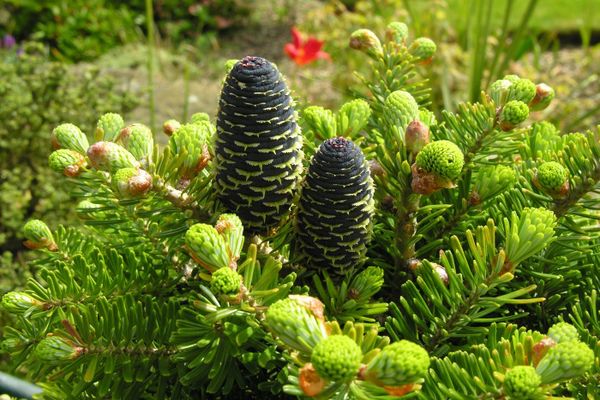
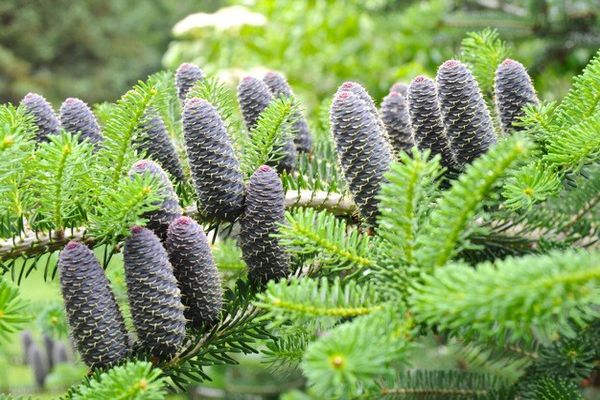
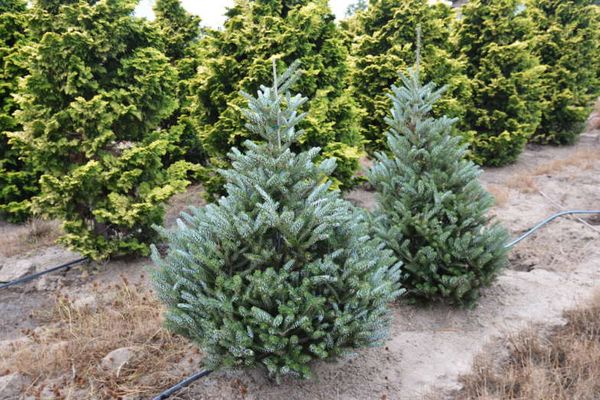
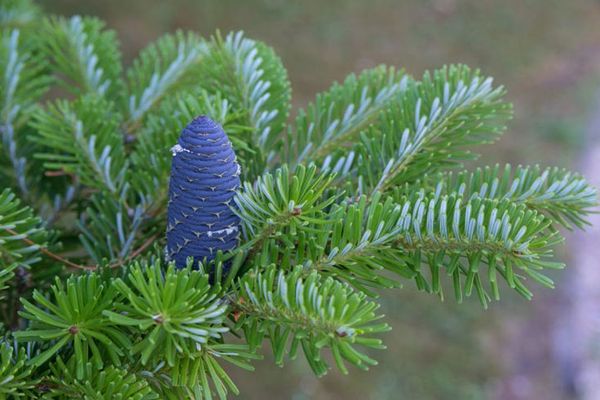
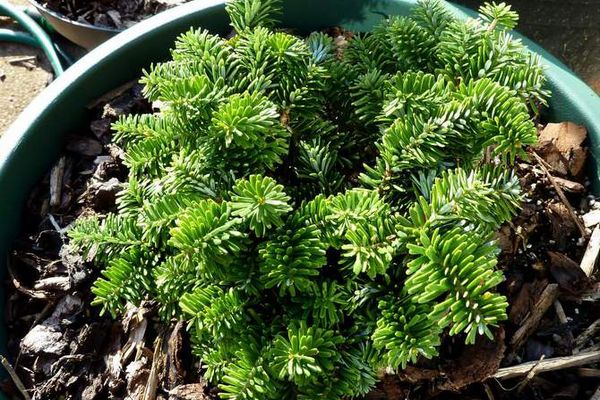
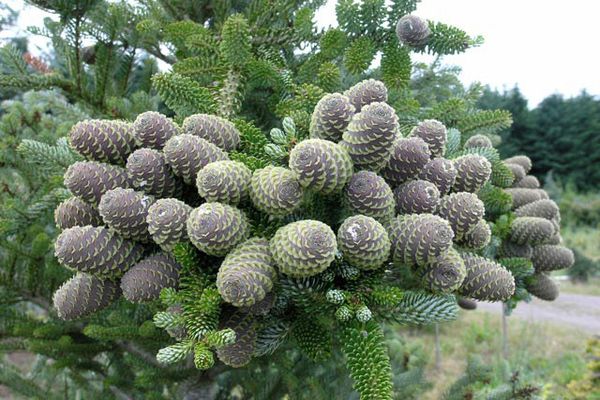
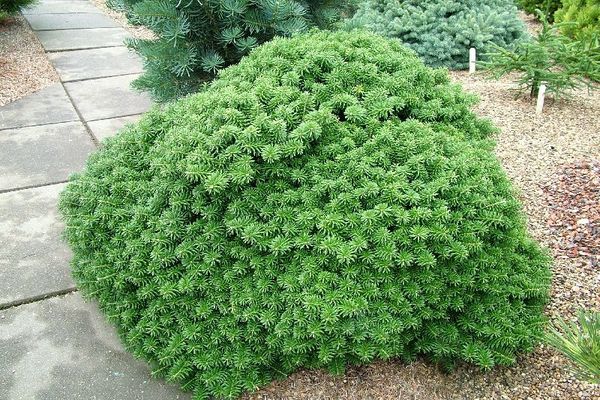
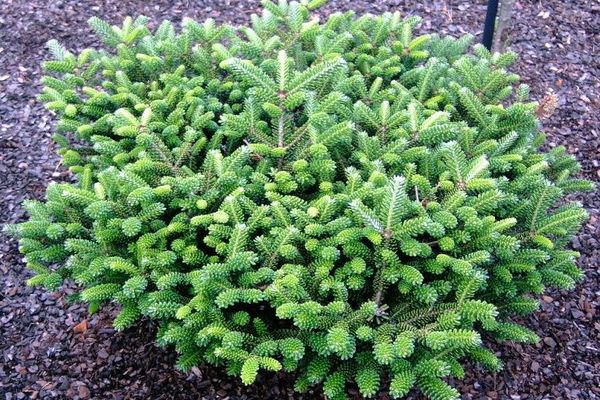
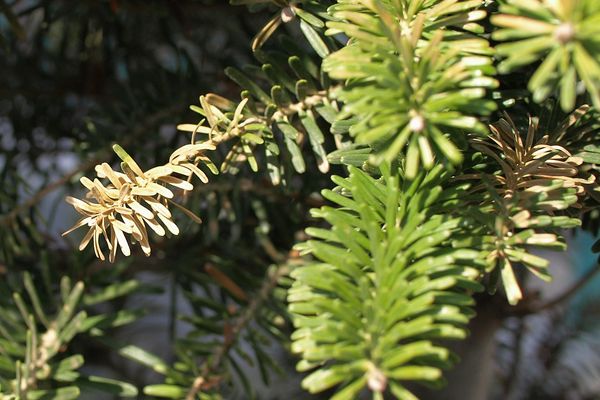
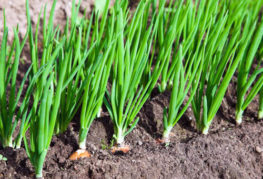
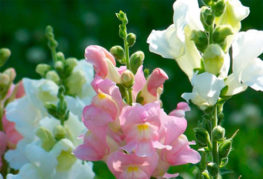
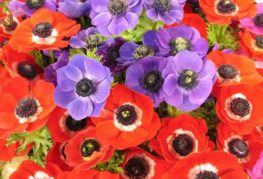
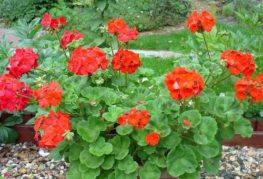
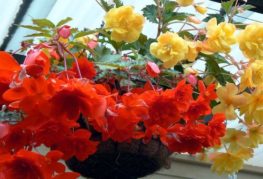
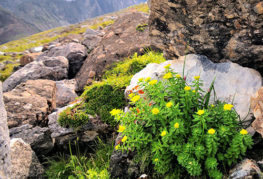
and will be published shortly.